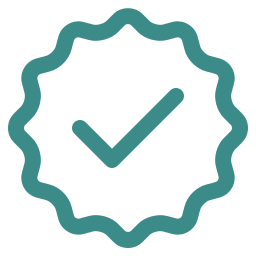Sculpting Serenity: How Pilates Counteracts Desk Strain and Enhances Posture for Office Warriors
Are you tired of feeling tense and slouching at your desk all day? Pilates can be the answer to your woes!
In this article, we will delve into the impact of a sedentary lifestyle on your body and why good posture is so important.
We will also explore common tension areas that desk dwellers often experience.
But don't worry, we won't leave you hanging - we'll introduce you to a series of Pilates exercises specifically designed to relieve tension and improve your posture.
So, let's jump right in and start incorporating the best Pilates Reformer into your daily routine!
Understanding the Impact of Sedentary Lifestyle
You might not realize it, but sitting for long periods of time can have a significant impact on your overall health and well-being.
As a desk dweller, it's crucial to understand the effects of a sedentary lifestyle on your body.
But don't worry, there are practical solutions to counteract these negative effects.
Pilates is an excellent exercise method that can help seniors, office workers, and anyone looking to improve their posture.
Pilates for seniors is especially beneficial because it focuses on gentle movements that promote flexibility and strength without putting excessive strain on the joints.
With Pilates chair exercises, you can easily incorporate this form of exercise into your daily routine even while sitting at your desk.
These exercises target the core muscles and help improve stability and balance.
One of the key benefits of Pilates is its ability to correct poor posture.
Sitting for extended periods often leads to rounded shoulders, forward head position, and decreased spinal mobility.
By practicing Pilates regularly, you can strengthen the muscles responsible for maintaining good posture and alleviate tension in areas such as the neck and upper back.
By incorporating Pilates into your routine, you can start experiencing the benefits of good posture.
Not only will proper alignment make you look taller and more confident, but it also has numerous health advantages.
Improved posture reduces strain on the spine, decreasing the risk of back pain or injury.
It also enhances circulation by allowing blood to flow freely throughout your body.
Now that we've explored how a sedentary lifestyle impacts our bodies, let's delve into why good posture is so important for our overall well-being.
The Benefits of Good Posture
Maintaining good posture can lead to numerous benefits, such as reducing back pain and increasing productivity.
When it comes to improving your posture, Pilates can be a valuable tool.
By incorporating specific Pilates postures into your daily routine, you can see significant improvements in your posture before and after practicing this discipline.
Pilates is a form of exercise that focuses on strengthening the core muscles while promoting proper alignment and balance.
Regular practice of Pilates on the Elina Reformer can help lengthen and strengthen the muscles responsible for maintaining good posture.
This increased strength and flexibility allow you to maintain an upright position with ease throughout the day.
One of the key aspects of Pilates is its emphasis on body awareness.
By engaging in mindful movement and focusing on proper alignment, you become more conscious of how you hold yourself throughout the day.
This heightened awareness allows you to make subtle adjustments to improve your posture continuously.
Incorporating Pilates postures into your routine can have transformative effects on both your physical well-being and overall mindset.
Not only will you experience reduced back pain as a result of improved alignment, but you will also feel more confident and energized throughout the day.
As we delve further into relieving tension for desk dwellers, understanding common areas where tension tends to accumulate is crucial.
By addressing these specific tension areas through targeted exercises and stretches, you can further enhance the benefits of Pilates for improved posture and overall well-being without taking any additional steps.
Common Tension Areas for Desk Dwellers
Addressing the areas where tension commonly accumulates can greatly enhance the benefits of incorporating Pilates into your routine.
When you spend long hours sitting at a desk, it's no surprise that certain areas of your body are prone to tension and tightness.
By targeting these specific areas through targeted exercises on BASI Pilates equipment, you can alleviate discomfort and improve your overall posture.
Here are five common tension areas for desk dwellers:
- Neck and shoulders
Constantly hunching over a computer can cause strain in the neck and shoulders. Pilates exercises like shoulder rolls and neck stretches can help release this tension.
- Lower back
Sitting for prolonged periods puts pressure on the lower back.
Engaging in exercises such as pelvic tilts and spinal twists on a Pilates pro chair or using chair Pilates exercises can strengthen the core muscles, supporting proper alignment and reducing lower back pain.
- Hips
Sitting all day can lead to tight hip flexors. Moves like lunges, hip circles, or leg swings help stretch and open up the hips.
- Wrists
Typing on a keyboard or using a mouse for extended periods can strain the wrists.
Wrist rotations, flexion, and extension exercises done during short breaks throughout the day can provide relief.
- Legs
Lack of movement while sitting causes blood circulation issues in the legs. Incorporating leg lifts, ankle pumps, or calf raises into your routine will stimulate blood flow.
By addressing these common tension areas through targeted Pilates exercises, you'll not only relieve discomfort but also improve your overall posture and well-being.
Now let's move on to an introduction to Pilates exercises that specifically target these problem areas.
Introduction to Pilates Exercises
Now let's dive into some introductory Pilates exercises that specifically target these problem areas.
Pilates is a fantastic way to not only relieve tension but also improve your posture during those sedentary hours at your desk.
By incorporating these exercises into your routine, you'll start to feel more energized and less stiff throughout the day.
First up, we have the shoulder bridge. Lie on your back with your knees bent and feet flat on the floor.
Pressing through your feet, lift your hips off the ground while engaging your core and squeezing your glutes.
Hold for a few seconds before slowly lowering back down. This exercise helps strengthen your glutes and lower back, which are often weak areas from sitting for long periods.
Next, we have the spine twist. Sit up tall with legs extended in front of you, your feet flexed. Rotate your torso to one side while keeping both sit bones grounded and shoulders relaxed.
Return to center and repeat on the other side. This exercise promotes spinal mobility and stretches tight muscles in the lower back.
Finally, let's try the chest opener stretch. Stand tall with arms outstretched to the sides at shoulder height.
Gently squeeze your shoulder blades together as you bring your arms behind you, interlacing fingers if possible.
Feel a gentle stretch across your chest and shoulders as you hold for a few breaths.
These introductory Pilates exercises will lay a solid foundation for relieving tension in common problem areas caused by prolonged sitting at a desk job.
They are not just another step-by-step guide to follow blindly without understanding why each exercise is beneficial or what it accomplishes physiologically speaking.
Pilates Exercises for Relieving Tension
Take a moment to incorporate these simple exercises into your routine and you'll start feeling more energized and less stiff throughout the day.
As desk dwellers, we often find ourselves hunched over our computers, shoulders tense and backs slouched. But fear not!
There are specific Pilates exercises you can do on an Align Pilates F3 that can help relieve tension in your body.
One effective exercise is the shoulder roll. Sit up straight in your chair with your feet flat on the floor.
Take a deep breath in, lifting and rolling your shoulders up towards your ears.
Then exhale, rolling them back and down, squeezing your shoulder blades together.
Repeat this movement five times, allowing yourself to release any built-up tension.
Another great exercise is the seated twist. Begin by sitting tall with both feet planted firmly on the ground.
Place one hand on the opposite knee and gently twist towards that side, using your core muscles to support the movement.
Hold for a few seconds before returning to center and repeating on the other side.
By incorporating these simple exercises into your daily routine, you can relieve tension in your neck, shoulders, and back while also strengthening your core muscles.
Now that you've learned how to relieve tension through Pilates exercises, let's move on to improving posture with some additional moves.
In our next section we will focus on techniques that will help align your spine and promote better posture throughout the day without putting strain on other areas of your body.
Pilates Exercises for Improving Posture
Incorporating these exercises into your routine can help align your spine and promote better posture, allowing you to feel more confident and comfortable in your body.
Here are four Pilates exercises that specifically target improving your posture:
- Pelvic Tilt
Lie on your back with your knees bent and feet flat on the floor.
Gently tilt your pelvis forward and backwards, focusing on engaging your abdominal muscles.
This exercise helps to strengthen the core and aligns the pelvis, which is essential for maintaining good posture.
2. Scapular Retraction
Sit up straight with arms extended in front of you at shoulder height.
Squeeze your shoulder blades together as you pull your arms back towards your sides.
This exercise strengthens the muscles between the shoulder blades, promoting proper alignment of the upper back.
3. Spine Twist
Sit tall with legs extended in front of you, cross one foot over the other knee, placing it outside of the opposite thigh.
Rotate your torso towards the bent knee while keeping a straight spine.
This exercise improves spinal mobility and encourages proper rotation through the thoracic spine.
4. Swan Dive
Lie face down with hands placed under shoulders and elbows tucked into sides.
Pressing through palms, lift head, neck, chest, and upper abdomen off the mat while keeping lower body grounded.
This exercise strengthens the muscles along your spine to improve overall posture.
Incorporating Pilates into Your Daily Routine
If you make these exercises part of your daily routine, you'll see improvements in your posture and overall well-being.
Incorporating Pilates into your daily routine is a practical and effective way to relieve tension and improve your posture, especially if you spend long hours sitting at a desk.
Pilates exercises on an Align Pilates H1 Reformer focus on strengthening the core muscles that support your spine and promote proper alignment.
By incorporating just a few simple exercises into your day, you can counteract the negative effects of prolonged sitting and enhance your overall physical health.
Start by setting aside dedicated time each day for Pilates exercises. This could be as little as 10 minutes in the morning or during a lunch break.
Consistency is key, so aim to make it a regular part of your routine.
One exercise you can do is called 'The Hundred.' Lie on your back with knees bent and feet flat on the floor.
Lift your head, neck, and shoulders off the mat while reaching your arms long by your sides.
Pump both arms up and down vigorously while inhaling for five counts and exhaling for five counts.
Repeat this pattern ten times, aiming to reach one hundred arm pumps in total.
Another great exercise is the 'Roll-Up.' Start by lying on your back with your legs extended straight out in front of you.
Reach both arms overhead towards the ceiling while inhaling deeply.
As you exhale, engage your abdominals to peel yourself up off the mat one vertebrae at a time until you are sitting tall with arms reaching forward. Roll back down slowly with control.
Frequently Asked Questions
Can Pilates help with weight loss?
Yes, Pilates can help with weight loss.
While it may not directly burn as many calories as high-intensity workouts, it still plays a significant role in shedding pounds.
Pilates focuses on strengthening your core and improving muscle tone, which boosts your metabolism.
Additionally, it helps you develop body awareness and mindfulness around eating habits.
Are there any specific Pilates exercises that target neck and shoulder tension?
To target neck and shoulder tension, there are several specific Pilates exercises you can try on an Align C8 Reformer.
One effective exercise is the shoulder bridge, which helps strengthen your upper back and shoulders while releasing tension in your neck.
Another great option is the chest opener stretch, which opens up your chest and relieves tightness in your shoulders.
Finally, the seated twist exercise can help release tension in both your neck and shoulders.
Incorporating these exercises into your routine can provide much-needed relief from desk-related tension.
How long does it take to see improvements in posture with Pilates?
Improving your posture with Pilates is like planting a seed and watching it grow. It takes time and consistency, but the results are worth it.
By practicing Pilates regularly, you can start to see improvements in your posture within a few weeks or months.
However, everyone is different, so the exact timeline may vary.
Remember to be patient and stay dedicated to your Pilates routine for long-lasting benefits that will make you feel more confident and aligned in your body.
Can Pilates be done at work without any equipment?
Yes, you can definitely do Pilates at work without any equipment.
There are many exercises that you can easily incorporate into your daily routine to relieve tension and improve posture.
Simple stretches, such as neck rolls and shoulder shrugs, can be done discreetly at your desk.
Additionally, you can engage your core by sitting up straight and focusing on your breath.
Remember to take regular breaks and move around to avoid prolonged periods of sitting.
Are there any modifications for people with lower back pain while doing Pilates exercises?
If you have lower back pain while doing Pilates exercises, there are modifications you can make to help alleviate discomfort.
First, focus on engaging your core muscles to support your lower back.
Additionally, try modifying the exercises by using props like pillows or a stability ball for added support.
Remember to listen to your body and only do what feels comfortable for you.
Consulting with a certified Pilates instructor can also provide personalized guidance for your specific needs.
Conclusion
In conclusion, incorporating Pilates into your daily routine can be a game-changer for desk dwellers like yourself.
By relieving tension and improving posture, you'll not only feel physically better but also experience increased productivity and focus throughout your sedentary hours.
So why wait?
Take charge of your well-being and give these Pilates exercises a try.
Your body will thank you, as you dance gracefully through the day, letting go of tension and embracing a new sense of balance.




